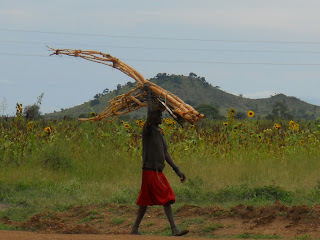 |
| Me in Karamoja during dry season, January 2011 |
Last week I saw rain. Amazing. Gabriel told me that I would see it—so much of it that I might get flooded. But for me, I wasn’t going to believe it until I saw it for myself. Rain in Uganda
 |
| Dry Season in Karamoja |
I moved to Uganda Uganda
 |
| The only plants that survive in drought are these thorn bushes |
By the end of 2010, however, it was raining again in the Karamoja Sub-Region. From my home in central Uganda
 |
| Karamoja in Rainy Season |
 |
| We saw this rainstorm in the distance from the village of Kayepas. |
Even though this particular drought has ended, Karamoja has a very short rainy season every year. The rest of the time, the Karamajong are left to manage through the long dry spells. Still, this area is not without its resources, and its people are not without hope. Henry often says that the hardest part of helping people who live in poverty is getting them to change their mindset of helplessness—getting them “to use the little they have in order to get what they don’t have.” Mercy Uganda
 | |
| People from the village of Kokorio |



No comments:
Post a Comment